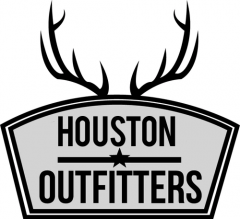How to Choose a Shotgun – Selecting the Action
The first thing a hunter needs to determine when choosing a shotgun is what action is best. The following is an overview of the terms and differences.
Many hunters start out by hunting upland game birds like grouse and pheasant. It follows that the first firearms purchase for many new hunters is a shotgun. With so many types, gauges, models, and price points on the market, how does a hunter without a lot of experience pick the right one? By setting a few basic parameters to narrow the search. A good place to start is the action.
Most shotguns fall into one of five basic categories – single shot, double barrel, pump action, bolt action, and semi-automatic. There is little difference until after the first shot is fired. The difference becomes readily apparent when a follow-up shot is required, a common occurrence with wing shooting.
Single Shot and Double-Barreled Shotguns
With a single shot firearm, the action must be opened manually, the spent shell casing ejected, a new shell loaded, action closed and weapon cocked and shouldered before a second shot can be fired. With practice, this takes mere seconds, but it can take a little longer for beginners.
A double-barreled shotgun is similar but allows two shots between reloading. Some have one trigger to fire both barrels in sequence, some have two triggers side-by-side and some have one trigger in front of the other. With many models, the choke or even the gauge differs between barrels, making one barrel better for close-up shots and one more effective as birds get farther away from the hunter. Two-barrel guns tend to be more expensive — some fancy skeet guns go for tens of thousands of dollars — but they are very popular with upland game hunters and with target shooters.
Both single-shot and double-barrel shotguns usually have a hinge break action. In other words, the hunter pushes a lever, and the gun “breaks” open, hinging at the base of the barrel or barrels. Both of these types of guns are very easy to clean and maintain, and a great starting point for young hunters because of their simplicity, safety, and reliability.
Pump Action and Bolt Action Shotguns
Pump action and most bolt action shotguns are repeaters (there are a few single shot bolt action models). In other words, after the first shot is fired the spent shell is ejected, the next shell chambered and the gun cocked in one smooth, quick motion by cycling the action. This involves moving the bolt or forestock backward and then forward again.
Pump guns are more common and a bit faster, since they remain at the shoulder while the action is cycled, whereas many hunters need to move from the ready position in order to cycle a bolt action. Both types of guns usually hold several shells, although some jurisdictions mandate how many can be placed in the gun at any given time. Bolt actions are easy to clean; the process is slightly more intricate with a pump action.
Semi-automatic Shotguns
Semi-automatic shotguns are the tool of choice for most serious waterfowl hunters. With these guns, the action is cycled automatically when a shell is fired, powered by either recoil inertia or the escaping gases. All the hunter needs to do to fire a second or third shot is to pull the trigger again. These types of guns are usually quite a bit more expensive than other types and require more attention to proper cleaning and maintenance. Cleaning and maintenance of a semi-automatic shotgun is somewhat more complicated again than a pump action.
Whether choosing the type of action or any of the other variables among shotguns, it is important to think about the ultimate use. Will it be a gun for hunting rabbits in the bush? For shooting pheasants over dogs? Ducks and geese from a blind? For skeet and trap competitions? Is cleaning and oiling an enjoyable part of owning a firearm, or a chore to be minimized? Giving thought to these aspects helps determine the most suitable action, which in turn narrows the field of prospective models.
